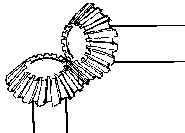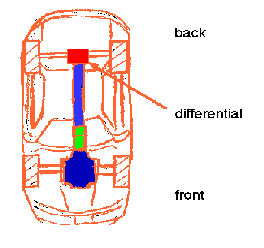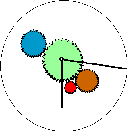
by Xiao Kai and Jimmy
A gear is a kind of Simple Machine which comes in a variety of sizes, with the teeth straight or curved and inclined at a variety of angles. They are connected together in various ways to transmit motion and force in machines.
There are 4 basic types of gears which include the following: bevel gears, spur gears, work gears, and rack-and-pinion gears. This lesson will teach you two of them.
1. BEVEL GEAR:
Two wheels intermesh at an angle to change the direction of rotation, also altering speed and force if necessary.

Example of Bevel Gears:
The most common example of bevel gears at work is an automobile differential.

the drive shaft of the motor must transfer its power at a right angle to the axle of the wheels.
2. SPUR GEAR:
This is a common type of gear. It transfers both speed and torque according to a basic rule called gear ratio. Torque is the applied force and turning effort.
If the two gears have the same number of teeth, they will turn at the same rate of rotation, and the applied force and turning effort (TORQUE) are changed in direction but not in magnitude.

If the gears have different numbers of teeth, however, the magnitude of the torque and the angular velocity are also changed.
A small gear driving a larger gear increases torque and reduces speed in the driven gear.

A large gear driving a smaller gear decreases torque and increases speed in the driven gear.

Example of Spur Gears:
Spur gears are always used in clocks.

Main Page